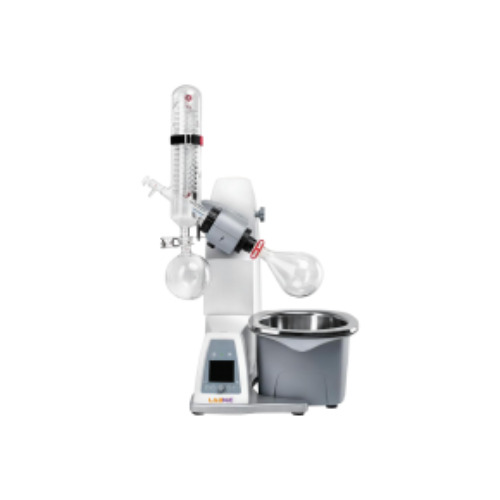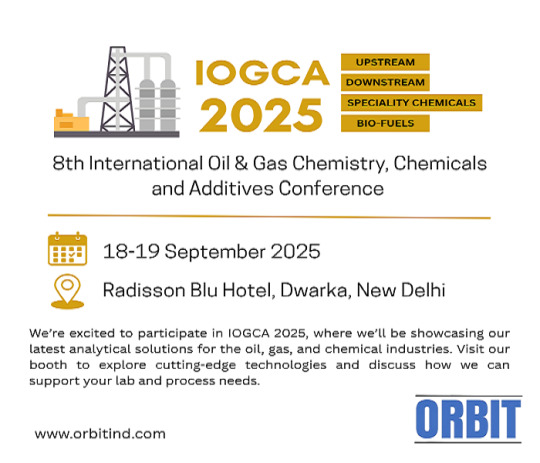#labtechnologies
Explore tagged Tumblr posts
Text
Rotary Evaporator 150 mm

Labnic Rotary Evaporator, featuring a 5L bath, is powered by a brushless DC motor with a 20–280 rpm speed. It offers a temperature range from RT to 180°C, a 1-999 min timer, precise temperature control and an automatic lift with safety features.
0 notes
Text
From Bench to Breakthrough: How Next-Gen Technologies are Transforming Labs
The laboratory equipment market is thriving, driven by advancements in next-generation sequencing, microfluidics, and automation
The Powerhouse of Discovery: A Look at the Laboratory Equipment Market From groundbreaking research to routine medical diagnostics, laboratory equipment plays a vital role in healthcare. The global laboratory equipment market is anticipated to reach a staggering USD 84.79 billion by 2030, driven by rising demand for advanced technologies and increasing investments in life sciences research. This…

View On WordPress
#AIdiagnostics#emergingmarkets#laboratoryautomation#laboratoryequipment#laboratoryresearch#labtechnologies#lifesciencetools#microfluidics#nextgensequencing#personalizedmedicine
0 notes
Text
Laboratory Instruments Suppliers in Bloemfontein – FinelabUK
FinelabUK is one of the top laboratory instruments suppliers in Bloemfontein, offering high-quality, precision-engineered lab tools for medical, research, and industrial applications. Our instruments are built for accuracy, durability, and performance. FinelabUK supports laboratories in Bloemfontein with innovative solutions tailored to their specific scientific needs

#LaboratoryInstrumentsSuppliersBloemfontein#FinelabUK#LabEquipmentBloemfontein#ScientificInstruments#MedicalLabSupplies#ResearchTools#BloemfonteinLabs#LabTechnology#PrecisionLabInstruments#TrustedLabPartner
0 notes
Text
Unlocking Foam Science: Measurement Techniques and Industry Insights
💡 Webinar Alert! Join us for a FREE educational session on understanding and measuring foam across industries.
🗓️ Date: June 26, 2025 ⏰ Time Slots: 10:00 AM IST or 7:30 PM IST 👩🔬 Speaker: Dr. Fiona Mary Antony (KRÜSS)
What you’ll learn: ✅ Foamability & Stability Testing ✅ Foam Structure Analysis ✅ Industry Applications in R&D, QA, and more
📌 Save your spot now: 👉 Register Here

0 notes
Text
Colorimeter Market Drivers: Key Technological and Industrial Factors Shaping Global Market Growth
The colorimeter market is experiencing notable growth, driven by a combination of technological advancements, increased quality control standards, and the growing need for accurate color measurement across multiple industries. These drivers are shaping a competitive and innovation-driven landscape, with companies investing heavily in more precise, efficient, and user-friendly colorimetry solutions. From manufacturing to pharmaceuticals, and from textiles to petroleum, colorimeters have become essential tools for ensuring product consistency and meeting regulatory compliance.

Rising Industrial Demand for Accurate Color Measurement
One of the primary drivers for the growth of the colorimeter market is the increasing demand for accurate and efficient color measurement across a broad spectrum of industries. Sectors such as food and beverage, pharmaceuticals, paints and coatings, textiles, and chemicals rely heavily on colorimeters to maintain product uniformity and quality. In industries where color plays a critical role in consumer perception and regulatory compliance, these devices are indispensable. For example, in the food industry, consistent color can indicate product freshness or quality, while in pharmaceuticals, it ensures the consistency and stability of formulations.
Technological Advancements Fueling Market Expansion
Technology is a significant catalyst in propelling the colorimeter market forward. Modern colorimeters are now more compact, user-friendly, and capable of high-precision measurements. Integration with digital platforms, wireless connectivity, and cloud-based data storage are transforming how industries collect, analyze, and share color data. These features not only improve accuracy but also increase efficiency, reduce human error, and streamline workflow processes. Portable and handheld colorimeters are becoming particularly popular due to their convenience in field applications, allowing on-site quality checks without the need for lab setups.
Regulatory Compliance and Quality Control Requirements
The growing emphasis on meeting international quality standards is another key driver. Regulatory bodies across industries are setting stricter guidelines for color consistency, particularly in products such as medicines, food items, and industrial coatings. Businesses are investing in high-performance colorimeters to ensure their products meet these standards and avoid costly recalls or regulatory penalties. The increasing adoption of standardized testing and reporting procedures further strengthens the need for advanced color measurement technologies, bolstering market growth.
Environmental Awareness and Sustainability Initiatives
Sustainability has emerged as a core focus in product manufacturing, influencing the materials, methods, and monitoring systems used in production. As industries move toward eco-friendly practices, the role of colorimeters in monitoring natural dyes, eco-friendly coatings, and biodegradable packaging materials becomes more critical. Accurate color measurement helps companies develop sustainable alternatives without compromising on visual appeal or quality, reinforcing the value of colorimeters in environmentally conscious production.
Growth in Research and Development Activities
Investment in research and development is pushing the boundaries of what colorimeters can do. Innovations in sensor technology, software development, and material science are giving rise to more sophisticated instruments capable of multi-angle measurements, complex data analysis, and integration with automated systems. These advancements are not only improving performance but also expanding the application scope of colorimeters, from traditional sectors like textiles to emerging fields like biotechnology and nanomaterials.
Expanding Applications in Emerging Markets
Emerging markets, especially in Asia-Pacific, Latin America, and parts of Africa, are seeing increased demand for color measurement tools due to rapid industrialization and urbanization. Growing manufacturing sectors, improved infrastructure, and rising consumer expectations are encouraging local businesses to adopt advanced quality control instruments like colorimeters. Additionally, government initiatives supporting industrial modernization are further boosting market penetration in these regions.
Increased Adoption in the Petroleum and Chemical Sectors
The petroleum and chemical industries are increasingly using colorimeters for product testing and quality analysis. In the petroleum sector, colorimeters help determine the quality and composition of fuels and lubricants. Variations in color can indicate contamination, aging, or blending issues, which are critical factors for operational safety and regulatory compliance. In chemicals, colorimeters assist in maintaining consistency in dyes, pigments, and intermediate products, playing a vital role in production accuracy and safety.
Conclusion
The colorimeter market is set to continue its upward trajectory, fueled by a blend of industrial demand, regulatory pressure, technological innovation, and expanding global applications. As companies strive for quality, sustainability, and competitiveness, the role of advanced color measurement tools becomes even more essential. With ongoing developments in smart technologies and digital integration, the future of the colorimeter market looks promising, offering new opportunities for manufacturers and end-users alike.
0 notes
Text
Bioprocess containers Market Industry Forecast, 2024–2030
Bioprocess Containers Market Overview

Request Sample :
A major trend is the growing demand for single-use bioprocess containers. Single-use bioprocess containers eliminate cleaning requirements between batches and reduce the risk of batch failure due to cross-contamination. Additionally, single-use systems are also cost effective. Respondents identified lower-cost single use devices as the most important area of interest for new products and technologies in 2023. Another notable trend is the rise in upstream bioprocess products driven by increasing demand for biopharmaceuticals, including biologics and gene therapies. As the industry focuses on enhancing cell culture, fermentation, and early-stage production efficiencies, there is a heightened need for advanced upstream bioprocess products to support these developments. According to a February 2024 article in BioProcess International, the top areas in upstream production were cell-culture media, bioreactors, and information technology (IT), which encompasses automation, software, and networking. Interest in IT solutions among respondents grew from 21.1% in 2022 to 29% in 2023.
COVID-19 / Ukraine Crisis — Impact Analysis:
The COVID-19 pandemic significantly accelerated the growth of the bioprocess containers market, driven by the urgent demand for vaccine production and biologics manufacturing. As pharmaceutical companies ramped up production, flexible and scalable solutions like single-use bioprocess containers became critical for handling cell cultures, reagents, and drug formulations. Additionally, disruptions in global supply chains and a heightened focus on healthcare infrastructure underscored the importance of efficient bioprocessing technologies. Post-pandemic, the market continues to grow, with increased interest in biologics, gene therapies, and personalized medicine fueling demand for flexible manufacturing solutions.
The Ukraine-Russia war has disrupted global supply chains, impacting the bioprocess containers market. The conflict has led to shortages of raw materials, increased transportation costs, and delays in production for biopharma manufacturing. Europe, a key region for bioprocessing, has been particularly affected by rising energy prices and supply chain instability. Companies have been forced to seek alternative suppliers and adjust logistics strategies to mitigate these disruptions. Despite the challenges, the growing demand for biologics and vaccines continues to drive the market, with manufacturers prioritizing resilient, flexible bioprocess solutions to ensure production continuity.
Key Takeaways 2D Bioprocess Containers are the Largest Segment
2D bioprocess containers dominate the bioprocess containers markets due to their cost-effectiveness and operational efficiency. Offering benefits such as easier storage, reduced contamination risk, and simplified handling, 2D containers meet the industry’s growing demand for scalable and flexible solutions. Additionally, their structure minimizes contamination risks and allows for easier handling, streamlining workflows and reducing labor-intensive procedures. As the biopharmaceutical industry grows, there is an increasing demand for scalable and flexible solutions to meet diverse production needs. 2D containers cater to these requirements by enabling single-use options that simplify transitions between processes, making them ideal for adaptable production setups.
Inquiry Before Buying:
Bioprocess Containers Market Segment Analysis — By Application
Cell culture is a major application of bioprocess containers (BPCs), playing a crucial role in the biomanufacturing industry. BPCs are extensively used for growing and maintaining mammalian, microbial, and insect cells, offering flexibility and scalability in production. They are designed with features like ports for sampling and reagent addition, and integrated sensors for monitoring environmental conditions. The increasing demand for biologics, including therapeutic proteins and vaccines, has driven the widespread adoption of BPCs in cell culture, making it a key focus in the development and manufacturing of biopharmaceutical products. According to Merck 2024, Merck invested $24.84 million to expand cell culture media production in Kansas, USA.
North America Dominates the Market
North America leads the global bioprocess container (BPC) market due to its advanced biopharmaceutical industry and substantial investments in research and development. The United States and Canada are at the forefront, driving significant growth with a strong focus on innovative single-use technologies and sophisticated manufacturing processes. The region’s robust infrastructure, presence of major biopharma companies, and commitment to cutting-edge advancements make North America a key player in the BPC market, particularly in applications such as cell culture, media preparation, and downstream processing. The United States dominates the pharmaceutical industry, home to some of the world’s largest companies like Pfizer, Johnson & Johnson, Merck & Co. and AbbVie. In July 2024, Despite the expected decrease in COVID-related revenue, Pfizer’s revenue rose 3% operationally to $28.2 billion. In December 2023, Pfizer finalized the $43 billion acquisition of Seagen (a biotech company), doubling its oncology pipeline. Such developments are a major catalyst for growth in the bioprocess container market, as it leads to a significant increase in the production of biopharmaceuticals, particularly in the oncology space.
Bioprocess Containers Market Drivers
Single Use Systems
The cost-effectiveness of single-use systems is a major driver of the bioprocess containers market. Single-use bioprocess containers significantly reduce operational costs compared to traditional stainless-steel systems by eliminating the need for time-consuming cleaning, sterilization, and maintenance. This leads to lower capital and operational expenses, making single-use systems an attractive option for biopharmaceutical manufacturers looking to streamline their processes and improve efficiency. As a result, the adoption of single-use bioprocess containers is increasing, driven by their economic advantages and the growing demand for flexible and cost-efficient manufacturing solutions. BioPlan’s 19th Annual Report and Survey of Biopharmaceutical Manufacturing indicates a substantial rise in the use of commercial-scale single-use (SUS) bioreactors, which grew from 32.5% in 2019 to 43% in 2022. This 32% increase is primarily due to the heightened demand for flexibility and rapid deployment in bioproduction during the COVID-19 pandemic.
Schedule A Call :
Rising Demand for Biopharmaceuticals
The rising demand for biopharmaceuticals is a key driver of the bioprocess containers market, particularly due to the increasing prevalence of chronic diseases such as cancer, diabetes, and autoimmune disorders among the aging population. As the global population of individuals aged 60 and above continues to grow, with significant increases in regions like North America, Europe, and parts of Asia, the need for advanced biologic treatments, including monoclonal antibodies, vaccines, and cell therapies, is intensifying. Bioprocess containers play a critical role in the production, storage, and transportation of these biopharmaceutical products, making them essential to meeting the growing demand. This surge in biopharmaceutical production is, in turn, driving the expansion of the bioprocess containers market. According to IDF projections, the number of adults living with diabetes will increase by 46% to 783 million by 2045, representing one in eight adults. The American Cancer Society (ACS) estimates that by 2050, the number of cancer cases is expected to rise to 35 million.
Bioprocess Containers Market Challenges
Regulatory Requirements
Regulatory requirements in the bioprocess container market pose a significant challenge due to the need to comply with stringent standards across various regions and applications. Manufacturers must navigate complex regulations, such as those from the FDA, ISO, and USP, which require rigorous validation and documentation. Staying up-to-date with evolving guidelines and ensuring that containers meet these standards is crucial for maintaining product safety and efficacy, but it adds complexity and cost to the manufacturing process. According to Cytiva, single-use bioprocess technologies are advanced but lack specific regulations, creating uncertainty about their suitability for therapeutic production and leaving bio manufacturers concerned about their appropriateness.
Buy Now :
Bioprocess Containers Market Key Players
Product/Service launches, approvals, patents and events, acquisitions, partnerships and collaborations are key strategies adopted by players in the Bioprocess Containers Market. The top 10 players in the Bioprocess Containers Market are
Lonza Group AG
Corning Incorporated
Entegris, Inc.
Parker Hannifin Corporation
Meissner Filtration Products, Inc.
Merck KGaA
Avantor Inc.
Sartorius AG
Thermo Fisher Scientific Inc.
Cytiva,
For more Lifesciences and Healthcare Market reports, please click here
#Bioprocessing 🌱#PharmaceuticalManufacturing 💊#SingleUseTechnology 🧪#BiotechIndustry 🧬#BioprocessContainers 🏭#LabTechnology 🔬#BiopharmaInnovation 🚀#HealthcareManufacturing 🏥
0 notes
Text
Benefits and Uses of Convection oven

In a laboratory setting, convection ovens serve essential functions in various scientific processes, providing controlled heat treatment for precise, consistent results. Here are the main benefits and uses of laboratory convection ovens:
Benefits of a Convection Oven in Labs
Uniform Heat Distribution:
The built-in fan circulates hot air evenly, ensuring consistent temperatures throughout the chamber, which is critical for applications requiring precise, uniform heating.
Reduced Drying Time:
Convection ovens allow for faster drying times by moving heated air across samples. This benefit makes them efficient for drying, curing, and dehydration processes in labs.
Temperature Stability and Control:
Laboratory convection ovens are designed with precise temperature controls, allowing for stable, consistent heating. This is essential for repeatable results and minimizes errors in sensitive applications.
Energy Efficiency:
By reaching and maintaining desired temperatures quickly and consistently, convection ovens in labs are more energy-efficient than conventional ovens, saving time and resources.
Enhanced Safety Features:
Many lab-grade convection ovens include safety features such as over-temperature alarms, automatic shut-off, and heat-resistant doors, which help reduce the risk of accidents in laboratory environments.
Uses of Convection Ovens in Labs
Drying and Dehydration:
Convection ovens are widely used to dry samples, glassware, or equipment by evaporating moisture quickly and evenly, essential in preparing samples for weighing or further analysis.
Curing and Polymerization:
In material science and chemistry labs, convection ovens are used to cure polymers, adhesives, and coatings, which requires precise, consistent heat to achieve optimal material properties.
Baking and Aging:
Convection ovens help simulate aging by exposing materials to specific temperatures over time, useful in testing the durability and longevity of products such as rubber, plastics, and coatings.
Sterilization:
Used to sterilize non-flammable equipment, tools, and glassware by heating to temperatures that destroy microorganisms. Convection ovens are an alternative to autoclaves for items sensitive to moisture.
Annealing and Heat Treatment:
Metals, ceramics, and alloys undergo annealing in convection ovens to relieve internal stress, enhance ductility, and alter mechanical properties, crucial for applications in metallurgy and materials research.
Evaporation of Solvents:
Labs use convection ovens to evaporate solvents safely from chemical mixtures. This is especially beneficial in preparing samples for qualitative and quantitative analysis.
Moisture Content Analysis:
Convection ovens are commonly used to measure moisture content in various materials. Samples are dried at controlled temperatures to constant weight, allowing accurate measurement of residual moisture.
Sample Pre-Treatment:
In analytical labs, convection ovens pre-treat samples by removing moisture, and stabilizing them for testing in procedures like chromatography, mass spectrometry, and elemental analysis.
When Not to Use Convection Ovens in Labs
Convection ovens may not be suitable for highly volatile materials or samples sensitive to oxidation due to the circulating air, which can encourage reactions. In such cases, vacuum ovens or inert gas purged systems are preferable.
In summary, laboratory convection ovens provide reliable, even heat for drying, curing, sterilizing, and other applications that require precise temperature control, making them indispensable for research, quality control, and analytical laboratories.
M-Kube Enterprise is an Indian company catering customized laboratory products, laboratory consumables, and laboratory solutions in India, Australia, the USA, New Zealand, Singapore, Malaysia, South Korea, Dubai, the Philippines, Indonesia, and Vietnam.
#LaboratoryConvectionOvens#LabEquipment#ScientificProcesses#HeatTreatment#ThermalProcessing#MaterialScience#LabTechnology#ResearchTools#QualityControl#AnalyticalLabs#UniformHeatDistribution#DryingAndDehydration#CuringAndPolymerization#SterilizationOvens#SamplePreTreatment#MoistureContentAnalysis#HeatTreatmentEquipment#AnnealingOvens#ConvectionVsVacuumOvens#LabSafetyFeatures#MKubeEnterprise#CustomLabProducts#LabConsumables#GlobalLabSolutions#LaboratorySuppliesIndia#LaboratoryEquipmentAustralia#LabProductsUSA#ScientificSolutionsAsia#LabEquipmentSuppliers#CustomLabSolutions
1 note
·
View note
Text
Why Choose an Explosion-Proof Rotary Evaporator?
If you're a lab researcher, especially in the fields of chemistry or pharmaceuticals, you know how crucial the right equipment is to the success of your experiments. When dealing with high temperatures or volatile liquids, safety and efficiency must always come first.
That's why the Explosion-Proof Rotary Evaporator has become an essential tool in our lab. Not only does it efficiently separate solvents, but it also ensures safety during operation. After all, a small mistake could lead to unforeseen consequences, right?
Why an Explosion-Proof Rotary Evaporator?
In many experiments, a rotary evaporator is a must-have, especially when extracting, concentrating, or purifying chemicals. One of its biggest advantages is its ability to evaporate solvents at low pressure, reducing heat loss during the process. But an Explosion-Proof Rotary Evaporator takes it a step further by eliminating the risk of explosions, making it the safest choice for hazardous environments.
I know choosing the right equipment can be confusing, especially when you need both safety and efficiency. You might be asking, “How do I find the one that’s right for me?” Well, the AKR-1020 Explosion-Proof Rotary Evaporator might just be the answer.
Advantages of the Explosion-Proof Rotary Evaporator
Enhanced Safety: Unlike regular rotary evaporators, the explosion-proof design ensures stable operation even in high-temperature, flammable gas environments.
Efficient Operation: The rotating motion of the evaporator accelerates solvent evaporation while maintaining solvent purity and concentration.
Smart Control System: With precise temperature and pressure control, it greatly enhances repeatability and reliability in your experiments.
How to Choose the Right Equipment
Choosing the right equipment isn't just about ensuring the success of your experiments; it’s also about keeping your lab safe. The Explosion-Proof Rotary Evaporator we offer at Equilrxnlab, like the AKR-1020, delivers exceptional performance without compromising on safety.
See It in Action!
Don’t just take my word for it! Check out this video to see how the AKR-1020 improves lab efficiency and safety in real-time. You'll see it’s not just a machine—it’s a smart lab assistant.
Why the Explosion-Proof Rotary Evaporator is Essential
Every successful experiment relies on the right tools, and safety and efficiency are factors that cannot be ignored. The Explosion-Proof Rotary Evaporator makes your experiments safer and more efficient. Choose the AKR-1020 Explosion-Proof Rotary Evaporator to add an extra layer of protection to your lab.
#ExplosionProofRotaryEvaporator#LabSafety#ChemicalResearch#RotaryEvaporator#LabEquipment#LabTechnology#ScientificResearch#Equilrxnlab#ChemicalInstruments#SolventEvaporation#InnovationInLab#LabEfficiency#SafetyInTheLab#ResearchTools#LaboratorySolutions
0 notes
Text

Revolutionizing Agriculture with Our Tissue Culture Lab!
At Shivchhaya Bio-Tech, we specialize in plant tissue culture to create high-quality, disease-free, and genetically uniform plants. Our cutting-edge lab provides sustainable solutions for plant propagation, genetic research, and conservation.
Why Choose Us?
🌿 High-Quality Plants: Disease-free and genetically consistent. 🌍 Sustainable Practices: Eco-friendly and efficient plant production. 🔬 Innovative Research: Advancing plant biotechnology and genetic improvement. 💡 Custom Solutions: Tailored for nurseries, researchers, and businesses.
Transform your agricultural practices with the future of biotechnology. Contact us today to learn more!
For more information visit: https://shivchhayabiotech.com/ Contact us on: +91 77790 21916
#TissueCulture#PlantScience#Biotechnology#SustainableAgriculture#PlantPropagation#GeneticResearch#EcoFriendlyFarming#AgricultureInnovation#BiotechSolutions#FutureOfFarming#Micropropagation#PlantBreeding#AgriculturalResearch#DiseaseFreePlants#LabTechnology#PlantConservation#AgriculturalTechnology#PlantBiotechnology#CropImprovement#ResearchExcellence#SustainableFarming#GeneticImprovement#PlantGenetics#InnovationInAgriculture#BiotechResearch#AgricultureLab#AgriculturalScience#AgTech#PlantGenomics
0 notes
Text

Labtron Anaerobic Jar is a hermetic container featuring a transparent lid, O-ring seal, and side tube for gas management. It holds 3 stacks of 8 petri dishes (9-10 cm) with optional racks for easy anaerobic operation, ensuring efficient lab performance.
0 notes
Text
Fully Automated Slide Stainer 135 ml
Labmate Slide Stainer is a compact tabletop unit with 20 stations, each holding 135ml. It ensures efficient staining with adjustable times and allows sample addition anytime. The end station offers automatic cleaning and water flow control for convenience.

0 notes
Text
Automatic Biochemistry Analyzer

zimed automatic bio chemistry analyzer with systems for loading, washing, cooling, and calibration. It retests samples after dilution if they are insufficient or results are out of range.
0 notes
Text
Laboratory Equipment List in Captain – FinelabUK
Explore FinelabUK’s comprehensive laboratory equipment list in Captain, featuring essential tools like microscopes, centrifuges, autoclaves, incubators, and spectrophotometers. Designed for accuracy and durability, our equipment meets the needs of research labs, medical facilities, and academic institutions. FinelabUK ensures quality and innovation in every piece of lab equipment.

#LaboratoryEquipmentListInCaptain#FinelabUK#LabEquipment#ScientificTools#MedicalLabSupplies#ResearchInstruments#CaptainLabSolutions#EducationalLabTools#PrecisionEquipment#LabTechnology
0 notes
Text
🛠️ Orbit Research Associates to Exhibit at IOGCA 2025
📅 Date: 18–19 September 2025 📍 Venue: Radisson Blu Hotel, Dwarka, New Delhi 🔗 Website: www.orbitind.com
Orbit Research Associates is excited to announce our participation in the 8th International Oil, Gas & Chemical Conference and Exhibition (IOGCA 2025), taking place at the Radisson Blu Hotel, Dwarka, New Delhi.

As a trusted provider of high-precision analytical instrumentation, we continue to meet the growing needs of the oil, gas, and chemical industries through cutting-edge solutions and expert support.
🤝 In Collaboration with PSL Systemtechnik GmbH (Germany)
We’re proud to exhibit alongside our principal manufacturer, PSL Systemtechnik GmbH, a global leader in process simulation and testing equipment for applications like flow assurance, hydrate formation, and wax deposition studies.
🧪 What You’ll Discover at Our Booth
✅ Live demos of advanced instruments for: ��— Surface chemistry — Interfacial analysis — Process optimization
✅ One-on-one consultations with our expert team ✅ Insights into improving data accuracy and compliance ✅ Global technologies customized for Indian industries
Whether you’re in R&D, QA/QC, or production, our solutions are engineered to optimize your workflows.
🔍 Explore Our Product Catalog
Preview the technologies we’ll showcase: 👉 www.orbitind.com/products
📞 Schedule a Meeting or Get in Touch
💻 www.orbitind.com | www.orbitresearch.co.in 📧 [email protected] 📱 011 – 42420858 | 45578977
📣 Join Us at IOGCA 2025
Visit us at the event and discover how Orbit Research Associates, in collaboration with PSL Systemtechnik, is helping reshape the future of analytical instrumentation in the oil, gas, and chemical sectors.
#IOGCA2025#OrbitResearch#OilAndGas#ChemicalIndustry#LabTechnology#PSLSystemtechnik#EngineeringInnovation#ScientificInstruments#TradeShows2025#ProcessOptimization
1 note
·
View note
Text
Rotary Evaporator 250 W

Labnic Rotary Evaporator is a top-quality, essential tool for cost-effective evaporation, with a 10L rotary flask, a 5L receiving flask, and a 21L water bath. It provides a 20–130 rpm speed range, an RT to 99°C temperature range and ensures quick heating with smooth, jolt-free operation.
0 notes
Text
Horizontal Autoclave 200L

Labmate horizontal autoclave is a powerful sterilization machine for high-volume use in medical, lab, and industrial settings. Its horizontal design allows easy loading of larger items. It operates within a temperature range of 50°C to 134°C, has a weight of 230 kg, and a time range of 0 to 99 hours.
#HorizontalAutoclave#Sterilization#MedicalEquipment#LabTechnology#IndustrialSterilization#SteamSterilization#HealthcareSafety#LabSafety#AutoclaveSterilization#InfectionControl
0 notes